
Revisiting the Wanderer Poet, Kim Sat-gat: The Poet by Yi Mun-yol
by Park Sungchang November 3, 2014

The Poet

Yi Mun-yol
“The Poet is a novel about the journey of a cursed literary figure through whom the author poses profound questions about the role and meaning of poetry against the backdrop of history; this book is like a compass that can guide us through the thick fog and storm of our lives.”
— Le Monde
Among the works by Yi Mun-yol, a prominent writer in Korea, there are those that could be called “the artist novels.” Through several works that are about artists, the author has persistently explored the meaning of art and its autonomous role free from politics. The Wild Ox (1979), Geumsijo (1981), and The Poet (1991) are Yi Mun-yol’s most famous artist novels. The Poet is a fictitious account of an actual 19th century person called Kim Byeong-yeon from the Joseon dynasty (1392-1910). Kim Byeong-yeon lived in the same era as the American writer Edgar Allen Poe, as well as philosopher John Stuart Mill of England; however, he is better known as Kim Sat-gat in Korea. Having given up worldly riches, fame, and power, he is viewed as a spontaneous poet who wandered all around the country carrying a bamboo cane, and wearing a sat-gat, a cone shaped bamboo hat; hence the origin of his name. This novel can be seen as a chronicle of the unfortunate scholar that Kim Sat-gat was, but at the same time through the exploration of the development of Kim Sat-gat’s philosophy of poetry, the author poses profound questions about the role and purpose of poetry. The author also states in the book, “Not everyone who deviates from a given life is a poet; however, all poets deviate from a worldly life.”
Because his grandfather surrendered as a traitor, Kim Sat-gat was deprived of opportunities for worldly success, and the only desirable method of raising his social status was through poetry. Therefore rather than stopping short of viewing writing poetry as a general prerequisite for a gentleman or something that the Neo-Confucian scholars did in their leisure time, he embraced it as a means of pursuing upward mobility. But when his aspirations were crushed because of the restrictions placed on his status and his family, Kim Sat-gat wandered all over the country and from this experience, reached a higher level of consciousness concerning the fundamental nature of poetry. In step with this shift in thought, a poet is not someone who uses poetry as a means for worldly success, but one who writes poetry for the sole purpose of writing poems. Hence, freedom is what poetry ultimately pursues, what is also referred to as bulipmunja in the East Asian tradition—an intuitive discernment or revelation that goes beyond words.
This book does not just tell the story of a man called Kim Sat-gat from the mid-19th century and his development of thought regarding poetry. By way of an earnest dialogue between the past and the present, the author poses the question of what poetry and literature signify in this day and age. The author asks if it is possible to create art that is free from a political position. Furthermore, he asks what defines the autonomy of art at a time when the global expansion of capitalism has created harmful commercial effects, and lastly what connotes true freedom for an artist. This remarkable novel not only asks fundamental questions about art that are meaningful in the present era, but also displays the author’s cogent understanding of Korean and East Asian art while simultaneously exploring the universal problem of what it means to be a true artist. 
Did you enjoy this article? Please rate your experience